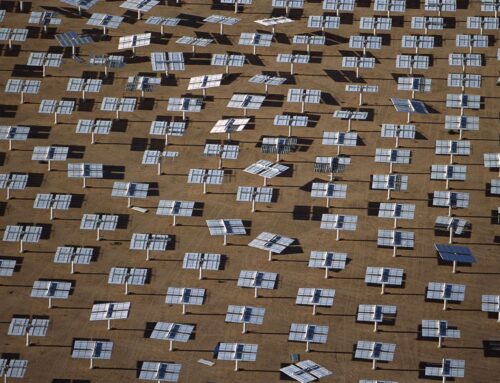Europe Finds the Largest Renewable Energy Treasure Under the Ocean — up to 45,000 Tonnes Y
May 17, 2025
Europe is turning to the North Sea to unlock a new source of renewable energy by producing up to 45,000 tonnes of green hydrogen annually. This region, historically known for oil and gas extraction, is now gaining attention as a key area for offshore wind energy development that will power the electrolysis process needed to produce clean hydrogen. The North Sea’s strong and consistent winds make it an ideal location to support this emerging energy sector, potentially transforming the continent’s approach to power generation.
The energy produced by offshore wind farms in the North Sea is expected to reach about 300 gigawatts, creating the electricity needed to split water into hydrogen and oxygen through electrolysis. This process generates hydrogen without any carbon dioxide emissions, making it a crucial element for Europe’s efforts to reduce greenhouse gas emissions and improve energy security. According to a study published in Science Direct, green hydrogen is “a vital component for energy evolution through its renewable production methods” and will “strengthen energy security systems substantially.”
Innovations in technology are also playing a significant role. One example is the Windcatcher system, a floating turbine installation designed to improve wind energy capture by acting as a wind energy “wall.” This, combined with existing wind farms, will increase electricity availability for hydrogen production. The shallow waters in the North Sea lower installation and maintenance costs, further supporting the feasibility of large-scale hydrogen projects in this area.
UK and French Companies Launch Green Hydrogen Pilot in the Southern North Sea
A new pilot project in the southern North Sea, led by the UK’s Centrica and French hydrogen services company Lhyfe, aims to demonstrate the viability of offshore green hydrogen production, along with storage and distribution. The project forms part of a broader Memorandum of Understanding between the two companies to explore hydrogen infrastructure development at commercial scale alongside offshore wind resources.
Colin Brown, the UK and Ireland country manager at Lhyfe, said, “We are pleased to announce this agreement with Centrica, which represents an exciting opportunity to drive forward the clean energy transition through large-scale offshore green hydrogen production.” He added, “Offshore electrolysis coupled with hydrogen storage will maximise the huge potential of offshore wind around the UK.”
The pilot project supports the UK government’s commitment to expanding its low-carbon hydrogen production target, which recently doubled from 5 GW to 10 GW by 2030, with at least half expected from green hydrogen. This increase reflects the government’s goal of moving away from fossil fuels, enhancing energy security, and supporting the country’s net zero ambitions. Martin Scargill, managing director of Centrica Storage, emphasized hydrogen’s role in this effort, stating, “Hydrogen is going to play a key role in decarbonizing the UK’s power supply by 2035.”

Overcoming Challenges to Realize Europe’s Hydrogen Ambitions
While the potential for green hydrogen production in the North Sea is significant, numerous obstacles must be addressed before large-scale deployment becomes a reality. Additionally, coordination across multiple countries is necessary to align regulations and investment priorities, requiring substantial efforts from governments and industry alike.
Securing funding for startup costs and improving electrolysis technology will be critical steps in this process. The integration of hydrogen into current energy markets depends on careful planning and collaboration between public and private sectors. The report stresses that “the realization of success will depend on solving these obstacles by implementing specific policies and developing public-private collaboration systems.”
Despite these challenges, the North Sea’s renewable resources offer Europe a chance to reduce dependence on fossil fuels while promoting economic growth in sustainable energy sectors. The region’s potential to become a leading global hub for clean hydrogen production is tied to advances in offshore wind power, strong government support, and innovative technologies.
Search
RECENT PRESS RELEASES
Related Post



